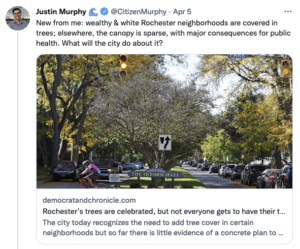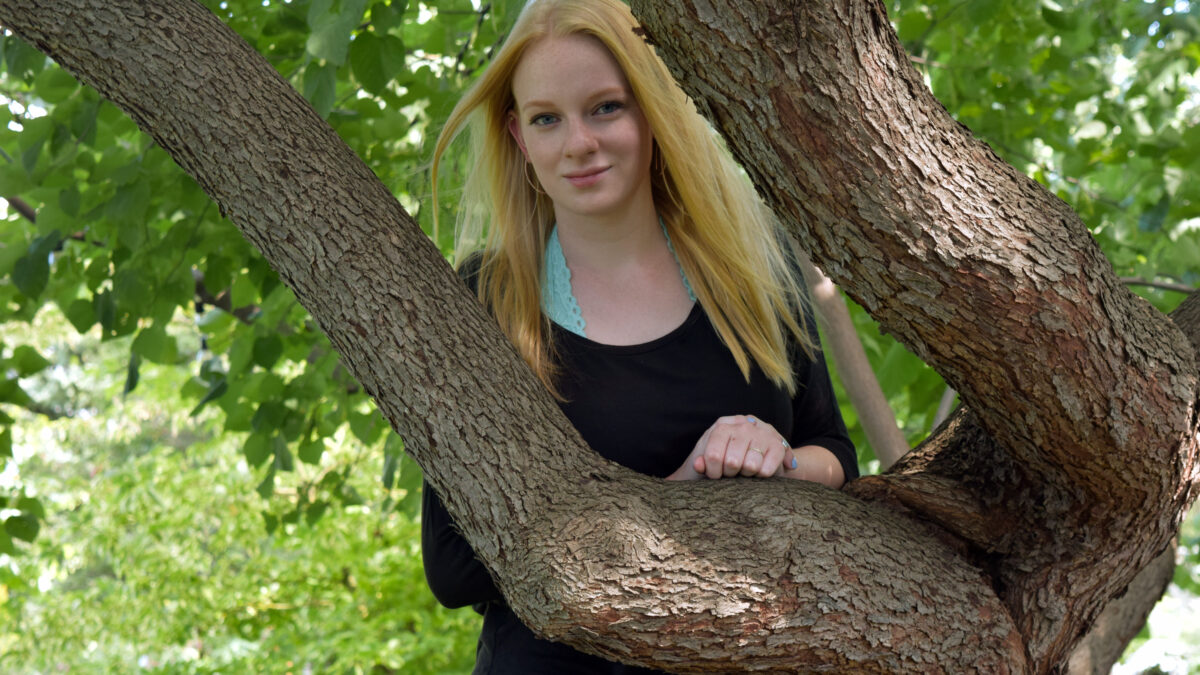When you think about public health, you don’t tend to think about trees. My college experience has expanded my understanding about how the environment affects public safety and public health.
For a semester-long public health internship, one of my professors connected me to Justin Murphy, a reporter at the Democrat & Chronicle, to help with an investigative project about Rochester’s tree canopy and correlated disparities.
 Research shows that areas with a higher tree canopy have statistically less violent crime, their residents have better mental health, and property values are higher. It’s something you don’t really think about until you start researching it. Areas lacking trees have more kids with asthma, for example.
Research shows that areas with a higher tree canopy have statistically less violent crime, their residents have better mental health, and property values are higher. It’s something you don’t really think about until you start researching it. Areas lacking trees have more kids with asthma, for example.
My main task was to reach out to the community and ask people about memories they have with trees. I used social media to post about this project and included a link to a form for people to share their stories.
One of my favorite stories was about a family that planted a tree for their 3-year-old daughter who had died. They mentioned how this is a tree they pass daily, and it reminds them of their daughter.
The main purpose of collecting tree stories was to add them to an interactive map that also showed how some areas of the city had a higher tree canopy than others. There are more trees and tree-related memories in some of the less culturally diverse, more wealthy areas, like Park Avenue.
When we look at some of the areas that are more culturally diverse, with more poverty, such as Avenue D, we see almost no submitted stories.
Overall, this project has opened my eyes to different environmental connections that affect health and wellbeing. I loved working on this project and being able to learn more about how I can help the City of Rochester.
 Madison Dobbertin ‘23 is majoring in public health with minors in business and psychology.
Madison Dobbertin ‘23 is majoring in public health with minors in business and psychology.

